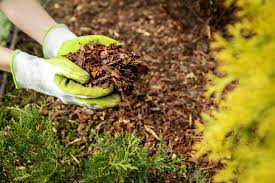By Benedict VanheemsJuly 23, 2016
When growing vegetables, once your seedlings are established, your focus should be on three key elements for success: preventing weeds, ensuring proper watering, and maintaining nutrient-rich soil. Organic mulch offers a simple yet effective solution to all these challenges while also enhancing the visual appeal of your crops.
Why Choose Organic Mulch?
Organic mulch is any biodegradable material applied to the surface of the soil, providing several benefits for gardeners:
- Weed Suppression: By blocking sunlight from reaching the soil, mulches dramatically reduce weed growth. This helps save significant time and effort in weeding.
- Soil Protection: Mulch acts as a protective layer, shielding the soil from erosion and compaction caused by harsh weather.
- Moisture Retention: Mulch locks in moisture, keeping the soil hydrated longer, especially during dry spells, which is crucial for plant health.
- Soil Improvement: As organic mulch decomposes, it enriches the soil, improving its structure. This benefits earthworms, which in turn enhance soil fertility and plant growth.
- Encouraging Biodiversity: Mulch attracts beneficial predators like spiders and ground beetles, which help control harmful insects naturally, reducing the need for chemical pesticides.

Types of Organic Mulching Materials
Mulching is an excellent way to repurpose garden waste. Here are some popular materials you can use:
- Grass Clippings: When available, grass clippings (free of chemicals) make an excellent mulch. Avoid applying them in thick layers to prevent unpleasant odors.
- Shredded Prunings and Bark: Shredded prunings or bark are perfect for mulching paths or around trees, shrubs, and bushes.
- Straw or Hay: These materials work well for taller, upright crops like strawberries, zucchinis, and bush tomatoes. Applying a thick layer of straw keeps fruits off the ground, preventing rot and keeping them clean.

Mulching Best Practices
To maximize the benefits of mulch, follow these guidelines:
- Timing: Avoid mulching during cooler, damp spring periods as it can harbor slugs. For best results, mulch after a rainfall or when the soil is thoroughly watered in dry weather.
- Proper Depth: Apply mulch in layers at least 1-2 inches (3-5 cm) deep. Straw and hay can be laid even thicker. Grass clippings, however, should be applied in thin layers to prevent matting.
- Weed Control: Before mulching, remove any existing perennial weeds. This will ensure the mulch can fully suppress new weed growth.
Mulching Bare Soil
Bare soil can also benefit from mulching, especially in the offseason. Use thick brown cardboard sheets (overlapping by at least 30 cm) to block light and prevent weeds. Weigh the cardboard down with stones or bricks to prevent it from blowing away.
Mulch can be applied in autumn or early winter, following the addition of compost or well-rotted manure to improve soil quality. This is particularly useful for preparing the soil for the next growing season.

Planting Through Mulch
Planting through mulch is straightforward. Simply pull back the mulch, dig a hole for your plant, and water it thoroughly. After planting, gently push the mulch back into place to avoid smothering the young plant.
For paper mulches, create a cross-shaped cut, dig the planting hole, and plant through the paper. Water directly through the paper to help the plant establish itself.
Conclusion
Mulching is a time-saving, cost-effective practice that can make a significant difference in your garden. By using mulch, you can suppress weeds, retain moisture, improve soil health, and create a more biodiverse and pest-resistant environment. Incorporate it into your gardening routine, and you’ll enjoy healthier plants with less effort.
